- Home
- Lloyd Jones
Mr Vogel Page 11
Mr Vogel Read online
Page 11
I see life as a cage with an open door, imprisoning mice that are too frightened to run wild.
But large numbers of Welsh people – escaping poverty and religious persecution – have gone through the door in the last 150 years, and they have spread all over the world like dandelion seeds on the wind. However, I have been one of the timid ones left inside the cage. I am glad to say that today I am the mouse which roared. I will make the whole of Wales my cynefin.
You many wonder at my preoccupation with minorities and majorities, with borders and human movement. The reason is quite simple: I am merely following a train of thought which was put in motion by the author of the Vogel Papers – I am trying to look at the issues he raised in a modern context, from the viewpoint of the Welsh people living today, since we are quite naturally concerned about the effects on our culture of successive waves (and a recent tsunami) of incomers, mainly English people. This incoming has always created an irresolvable tension in the native Welsh, because half of their psyche wants to reject this constant and overwhelming threat to their culture and traditions, whilst the other half wants to extend a warm hand of friendship to every newcomer, a trait which is exceptionally strong in the Celt. To double this tension we have been strongly affected by English culture, and of course the language, which is one of the strongest in the world at present, and a beautiful one at that. This interracial tension is a common syndrome throughout the world, during an era when dozens of languages die every year.
There is no simple answer. The people of England are also a collection of tribes, and since there was a huge resurgence in nationalism in the world during the twentieth century it is interesting to note that the English have largely ditched the Union Jack lately in favour of the flag of St George, so they also have felt this keen renewal of nationalism (except Yorkshiremen, perhaps).
Those other words I mentioned were hafod and hendref. Thousands of homes and farms throughout Wales bear these names: hafod was the summer residence, usually a crudely-made abode in the uplands, and the hendref was the winter residence in the lowlands. These words are the hieroglyphs of a vanished Welsh society which moved its flocks to upland pastures every spring, men and sheep first, women and children following later, thus engendering almost as many jokes as there are sheep about the relationship between Welshmen and their little woolly lovikins. I will come out of the closet immediately, to save a lot of time, by declaring myself a great admirer of sheep; they are far more intelligent than the urbanite thinks, probably more intelligent than the dolphin – all they need is a makeover by the same agency as the one used by the Dolphin Corporation.
Hafod and hendref: this annual movement, called transhumance, sounds like a good arrangement to me; you’re living in two worlds, which must be a lot more interesting than working at a desk (school and then office) for most of your life in return for a box to sleep in and a few gizmos.
As I breeze along the two Ormes on the North Wales coast – named after the Norse word for worm or serpent, because that’s what these great headlands looked like, looming out of a Welsh fog, as the invaders rowed ashore – I contemplate some of the things I am not going to encounter on my journey (or if I do I will hit the headlines).
Wolves. I am not going to be attacked by wolves, such as the Beast of Gevaudan mentioned by Robert Louis Stevenson in his Travels with a Donkey in the Cevennes, and by Nicholas Crane in the riveting account of his 10,000-kilometer walk across the mountain ranges from Finisterre to Istanbul. This is how Crane tells the story:
... the Beast of Gevaudan was preying on this part of the Cevennes, eating sheep and young women. Bodies were found drained of blood and partially eaten. Theories blazed along the valleys: the Beast was a vampire wearing a wolfskin, or it was a wolfpack being guided by a crazed tyrant, or it was a lone wolf of enormous size. For three years the Beast caused panic in the isolated communities of the Cevennes, separated from one another by forest and appalling roads. The bishop of Mende ordered public prayers and hunts were dispatched by the Intendant of Languedoc. As more went missing, dragoons rode out and a reward of 6,000 livres was offered by the king. When a 130-pound wolf was shot in September 1765, the harassed population filled the churches and the Beast was sent, stuffed, to Versailles. Three months later two boys were killed near Mont Lozere. Through the winter and following spring the killing spree resumed with new ferocity until Jean Chastel found himself looking down his sights at a second wolf. After that, the killings stopped.
No, I’m highly unlikely to be killed by a wolf. One source says that Idwal, King of Gwynedd during the tenth century, was obliged to provide 300 wolfskins every year to the English crown, but Edward I – the very same delightful man who built those chunky designer castles along the North Wales coast – ordered their extermination, and the last reference to the species in Wales occurred in 1166 when a ‘mad wolf allegedly killed 22 people.
No, I’m not going to meet a wolf. Nor a golden eagle. The last was seen in Wales around 1750. Neither can I expect to be rushed by an enraged bear, like the specimen which ran ‘with a relaxed, shaggy gallop, like a second-row rugby forward’ towards Nicholas Crane in the Carpathians, and from which he ran with such terror that he ended up clinging to a tree, retching, after an Olympic-standard sprint, carrying a heavy rucksack, into the forest. No, I’m not going to bump into a bear either, though the borderland with England, the Marches, could still harbour a few nasty surprises I imagine. I will not, thank god, have to carry a message stick, as do Australian Aborigines who want to show that they’re messengers when they’re travelling through another tribe’s territory.
I must take great care not to wander off the beaten track. In 695, the Kentish King Wihtread passed the following law:
If a traveller from afar, or a foreigner leave the road, and he then neither shouts nor blows a horn, he is to be regarded as a thief, to be either killed or ransomed.
So if you meet a chappie in the undergrowth, a-hollering and blowing a horn as loudly as his lungs will allow, don’t panic. It’ll be me – not a madman. Honestly.
Will I be strong enough to walk all that way? My Welsh ancestors would have breezed it: I like this excerpt from the British Gazeteer of April 24, 1773:
Saturday morning a singular race was run on the road between Redbourn and St Albans, one mile, between a labouring man, and a Welsh girl in her pattens, when the Welsh girl won the match.
What sort of people will I meet? Certainly not the sort of people Michael Faraday, of electromagnetic fame, encountered when he wrote his Journal of a Tour Through North Wales some two hundred years ago. This is how he described the Welsh peasantry:
They are bare legged and bare footed, sometimes bare headed. Their cloathes are coarse and hang loosely and they have not the appearance at first (at least they had not to me) of being remarkable for cleanliness or order. But this erroneous judgement must be rectified. In their houses and their persons they are equally orderly and the very custom of walking bare legged and footed is a proof of it. Every girl and woman in going from their houses to the town takes her shoes and if she has stockings, them also with her. She walks however without them on, but on nearing the town washes her feet in a brook, puts herself in order and then makes a respectable appearance.
Neither am I going to be ‘surprised to see a number of fine women bathing promiscuously with men and boys, perfectly naked’ at Abergele, as Samuel Taylor Coleridge was in July, 1794. No such luck, I’m afraid.
Today I watched the Ursula C loading her cargo from a rattling jetty on the shore at Llanddulas, stones disappearing into her maw like grit into the gorge of a floating bird. A tiny bit of Wales is taken away across the sea, like rock from a seaside sweet stall. Two of the crew stood on the prow, looking out to land, reminding me of that ship which ran aground in the Vogel Papers. Apparently there are up to a million people in the world who spend their entire lives on ships because they can’t land – they have no nationality. Wouldn’t that be direful – not being a
ble to walk around on land! Or there again, you may be a root not a branch: as William Congreve put it in The Way of the World: “I nauseate walking; ’tis a country diversion. I loathe the country.”
The weather has been benevolent, all blue and white like an Italian nun, and I am traversing the coastline steadily and pleasantly, meeting very few people on the hoof, although thousands of mutants, all of them hiding under a shiny tin carapace, are screaming along the A55, bound for charmless houses built to replicate faithfully the suburban steppes of Middle England. The Welsh Assembly has ensured that this part of the country is completely desecrated by allowing a huge new industrial park to be built on a substantial greenfield site within a stone’s throw of the sea. And these people are supposed to be on our side. What did Crazy Horse say?
One does not sell the earth upon which people walk.
Gannets out to sea, plunging into the water. The horizon is uncompromising, the sea cobalt and cold, and the sky is a Canaletto canopy to contain my breezy spirits.
I forgot to tell you anything about my country, those of you who have never been here, so I will provide a few details.
Wales is a small country which happens to be next door to England, and is therefore part of the United Kingdom. Cynics have likened it to a patio built onto England for the English to play on, others have likened it to an ear stitched onto England, condemned perpetually to listen slavishly for instructions. I leave it to a better wordsmith than I, Jan Morris, to describe the place of my birth:
... on the western perimeter of Europe lies the damp, demanding and obsessively interesting country called by its own people Cymru... and known to the rest of the world, if it is known at all, as Wales. It is a small country, in many ways the archetype of a small country, but its smallness is not petty; on the contrary, it is profound, and if its frontiers were ever to be extended, or its nature somehow eased, its personality would lose stature, not gain it.
You must look hard to find Wales in an atlas, for it is a peninsula not much larger that Swaziland, rather smaller than Massachusetts, inhabited by a mere 2.9 million people. Also is it so obscurely tucked away there, in the heart of the British archipelago, that many maps fail to name it at all, and as often as not people elsewhere have never heard of it, or at best assume it to be a municipality somewhere, or a lake in Florida. Its image is habitually blurred; partly by this geographical unfamiliarity partly by the opaque and moody climate, partly by its own somewhat obfuscatory character, which is entramelled in a dizzy repertoire of folklore, but most of all by historical circumstance.
For although Wales is a country, it is not a State. It has a capital city, but not a Government; its own postage stamps, but not its own currency; a flag, but no embassies; an indigenous language, but not indigenous laws. All this is because, though it is surrounded on three sides by sea, on the fourth its border marches with the powerful kingdom of England, and for some 700 years it has been absorbed into the political entity of Great Britain, with its seat of power in London...
... it is a wonderfully well-proportioned country. Nothing is too big, nothing lasts too long, and there is perpetual variety. It is only some 130 miles from the northern coast of Wales to the southern, only 50 miles from east to west at the narrowest point – a day’s drive one way, a couple of hours the other. Yet within this narrow compass there are places that feel like India, and places not at all unlike Australia, and places that remind one of Wyoming or northern Spain, and many places that are, with their especially piquant blend of age, damp, intricacy and surprise, altogether and unmistakably Welsh.
Wales, in short, is a bag of tricks – a Russian doll, for as soon as you open one Wales there is another inside waiting to be opened. It has great natural beauty and wildness scarred only by man-inflicted cruelties.
The guy who lives in the flat below me limps up the stairs with my mail whenever I get any worth reading – he has a good eye for the dross, including free newspapers, and he leaves it all to heap up in a teetering pile, like the books in the Blue Angel bookshop. In late February it rained for a fortnight and I was housebound; I got depressed – my letters lay on the landing outside my door for day after day.
This old man and I meet on the stairs quite often and share a few words. He is urbane and well-travelled. Having the look of a hippy-trail beatnik perhaps, with a frizzled grey beard, he spoke to no-one for many months after arriving from nowhere. People took him for a sun-worshipper because he often stood for hours looking at the sky. They were wary of him. But when he announced his intention to form a society for cloud-worship he was embraced warmly by the community, though no-one joined his crazy club.
One rare storm-free afternoon, after hours of walking in the company of oyster-catchers and curlews by the lagoons on the shoreline close to our seaside town, and watching water swirl along the vermiculated mudflats as the tide moved in, I looked at my piled-up letters. On the top there was a postcard with a chair-lift pictured in the foreground. My eye was drawn to the trees in the background, which didn’t have a British shape. The card had two colourful foreign stamps. The address simply had my name and the name of our town. Fortunately, I am well enough known for it to reach my door.
The message was brief.
Cannot get in touch. Is your e-mail working? I have some news for you. One of my friends has made a connection between Vogel and Tasmania. Please contact me – Williams.
I hadn’t touched the computer for days. When I get these bouts I tend to shut down all systems and wait for the bleakness to go away, or I walk it off.
Today, as I strolled along the shoreline I thought of Mr Vogel, who had never been for a walk in his entire life. I wondered how he’d felt about his confinement, how he’d coped with captivity. In an imaginary conversation I shared a few of my thoughts with him, and tried to explain what it’s like to move along the land, something we take so much for granted. This is what I told him:
The natural rhythm of walking is a mild sedative. It’s a fairly simple equation involving physical movement, almost musical in its pattern, followed by well-being. Endorphins released by the body during exertion give a pleasant ‘high’. Presumably this is the residue of a primeval reward system which gave the hunter-gatherer a ‘fix’ for running about in search of food. It occurs to me that this ‘high’ we experience could have been much more intense – approaching a climax perhaps – when hunting was a life-or-death activity.
The moving landscape provides an absorbing diversion which frees the mind and gives us a fresh viewpoint, and we’re most at ease with the world when we walk because everything is happening at a manageable pace. If we travel any faster – by car, say – the brain has to shut out most of the information it receives and is therefore in a state of conflict. Walks have been described as ‘looking the world into existence.’
They have also been described as a private revolt; a journey between one’s past and one’s future; the creation of a story; a treasure hunt; a way of measuring ourselves against the Earth; a miniature soap-opera, and much else. Scientists believe that man came down from the trees and started walking long before his other main attribute developed: his ‘big’ brain. Walking can take us to paradise – but look where our brains have led us.
There had been another reason for my despondency. I had been asked by a magazine which had picked up on my story to write an article on my venture. I had done so, and as a device I had compared my little amble to the great walk by the American trail-blazer Earl Shaffer, who was the first to walk the full 2,000-mile length of the Appalachian Trail, in 1948. The hike, from Katahdin in Maine to Springer Mountain in Georgia, took him around four months. That meant he walked about 16 miles every day for 120 days, which is barely credible. Some years later he did it again, but in the other direction. Even more remarkably, he returned to the trail a few months before his 80th birthday and did it yet again to celebrate the 50th anniversary of his first walk.
The day after I sent my article to the editor Earl Shaffer d
ied. You can’t get more cussed than that. The old dog had surely waited until then to pop his clogs, just to annoy that het-up little editor who made me spend a night changing tenses (which, I suppose, is what we all do if we die in our sleep). All this hassle had left me low.
But Williams’s postcard got me going again so I switched on the machine and got in touch.
Sorry, I said, computer broke, now mended. He must have kept his e-mail draft because it came almost immediately, and like the Bonesetters link it gave me another valuable lead in my bid to unravel the Vogel mystery.
This is Williams’s e-mail, in full:
Greetings from Tasmania, hope you’re OK and not letting this Vogel thing tie you in knots. Great bit of news about our hero. Went to a party and met a doc down on leave from the capital, expert on bones etc doing research into something called Paget’s Disease, chronic skeletal disorder, reckons Vogel may have had it. We got a bit squiffy together and he got talking about a woman called Hunt who was a bit of a patron saint of cripples in the UK, fresh air fiend apparently, had the patients outside the wards in all weather, even in snow. Anyway, the mad thing is, this Hunt woman spent some of her early years in Tasmania! She wrote a book about her experiences. Get weaving mate! Can’t get the book here, there’s a reference to her on the internet, but only in connection with a hospital.
Keep me posted, I’d like to know if you find fresh info. All the best – Williams.

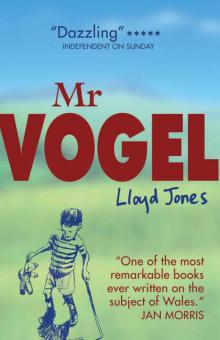 Mr Vogel
Mr Vogel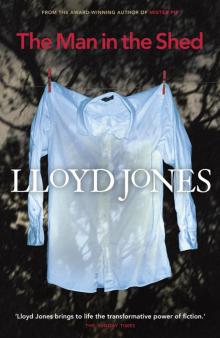 The Man in the Shed
The Man in the Shed Mister Pip
Mister Pip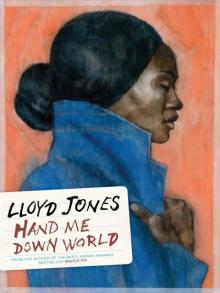 Hand Me Down World
Hand Me Down World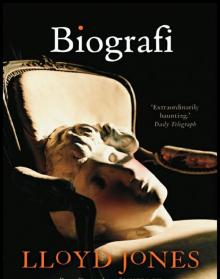 Biografi
Biografi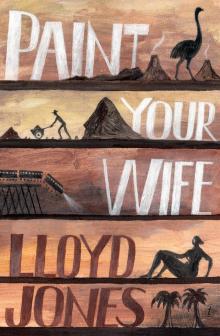 Paint Your Wife
Paint Your Wife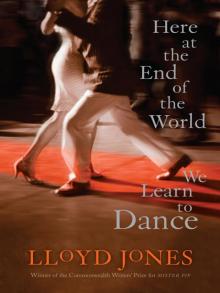 Here at the End of the World We Learn to Dance
Here at the End of the World We Learn to Dance My First Colouring Book
My First Colouring Book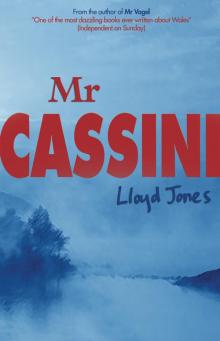 Mr Cassini
Mr Cassini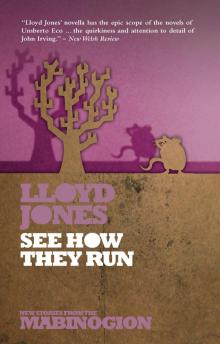 See How They Run
See How They Run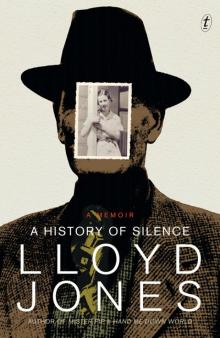 A History of Silence
A History of Silence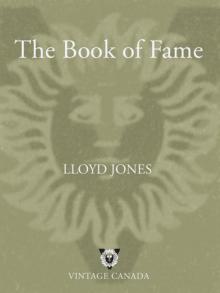 The Book of Fame
The Book of Fame